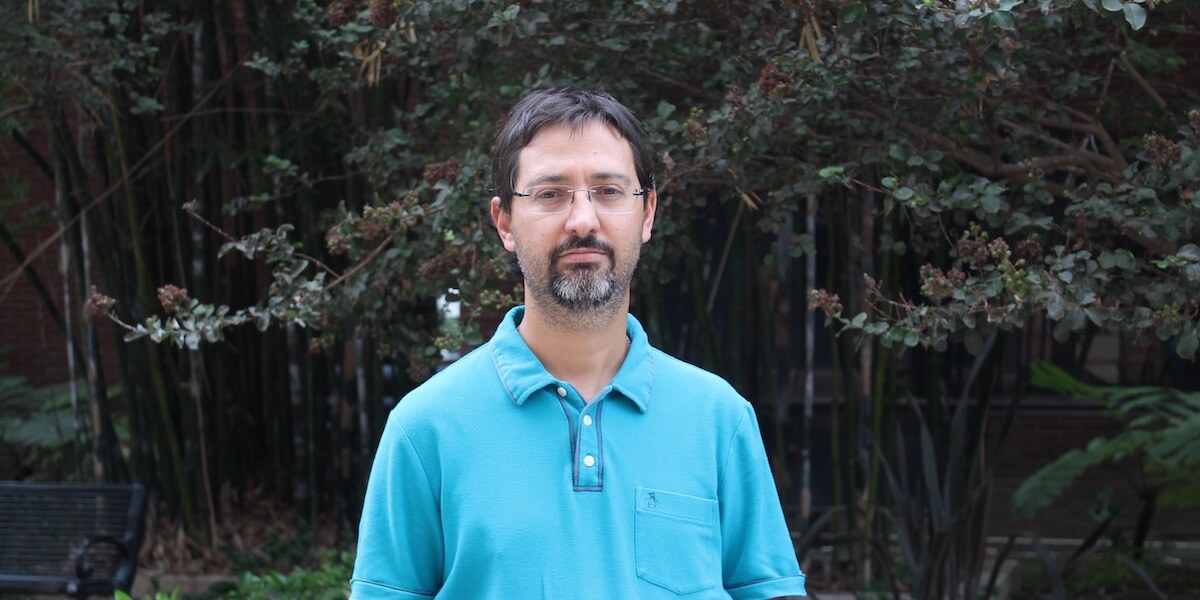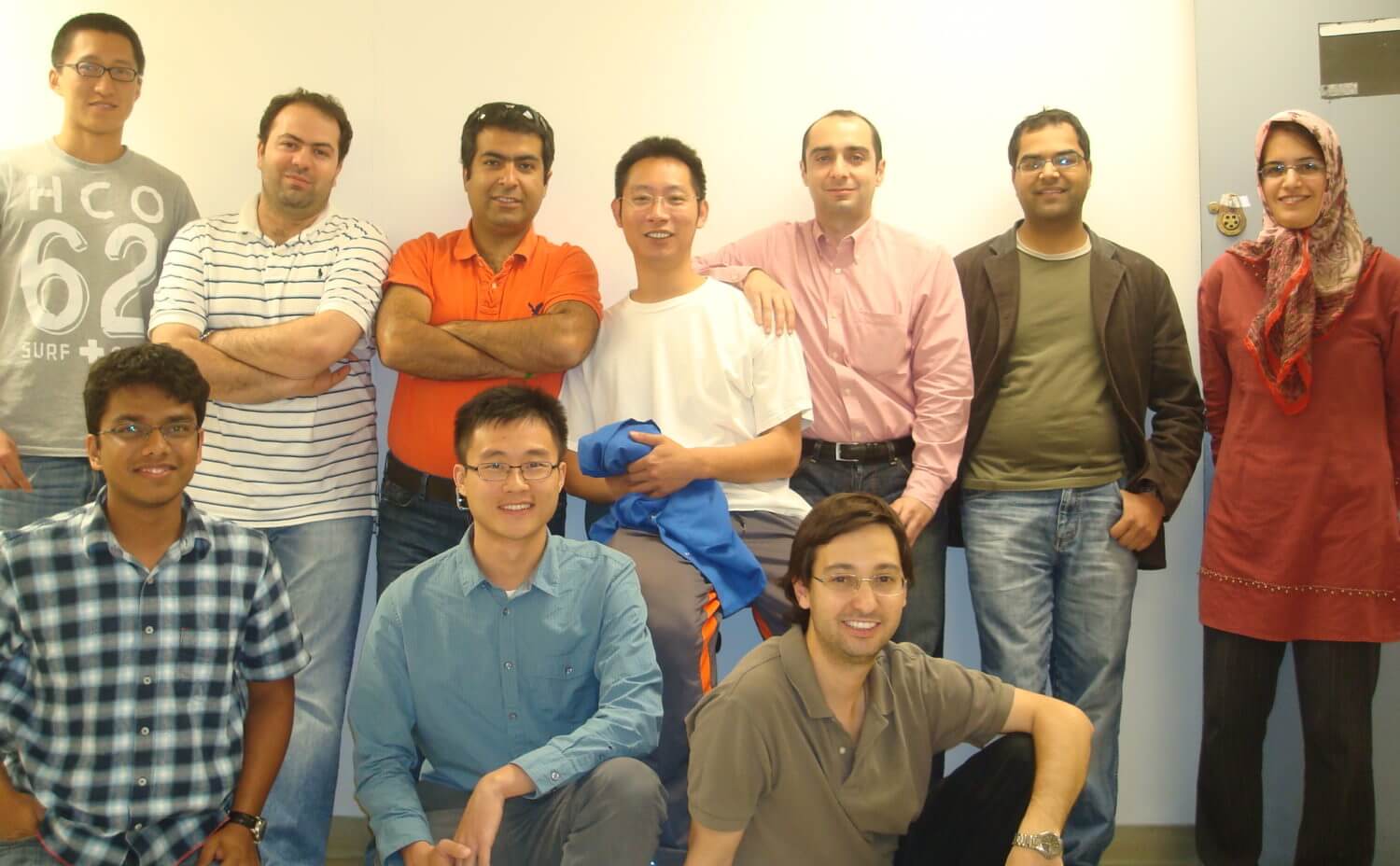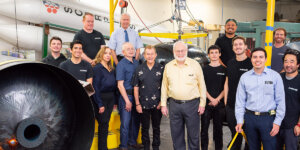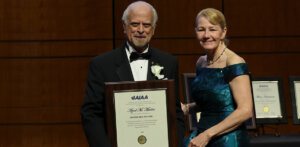
Marcelo Segura, an expert on Software Defined Radio, recently taught a course on the technology to EE Ph.D. students. Photo Credit: USC Viterbi
Since the dawn of time, software and hardware have been locked in an existential arms race for technological supremacy. Without hardware, there could be no software, and without software, hardware is irrelevant. For years it seemed like this conflict would go on forever. Until now.
Thanks to a group of USC researchers and a technology known as Software Defined Radio (SDR), this blood feud may finally be put to rest. SDR doesn’t just break down the barriers between software and hardware, it makes us question their very nature to begin with. For years it was only a theoretical application, but recent developments have led to the practical applications promised decades ago.
First, a little background into what exactly SDR is.
Electronic communication takes many forms: A cell phone, a computer, a TV, even a car door opener. All of these machines, and many others, are wireless communication devices and, by definition, radios. What makes one kind of radio do something different from another is the type of hardware installed inside it. A computer has different parts than a television, so they do very different things. If you wanted to turn that television into a computer, you’d have to take it apart and replace a bunch of physical parts – a slow, inefficient, and impractical process.
SDR allows software to do things that had to previously be done by hardware. That means turning one type of radio into another is as simple as changing a bit of software. How much easier is that? Well, everyone has made updates to their computer, or downloaded and installed a software program. But how many people have taken apart a computer and installed new hardware directly into the machine? SDR allows one type of radio to be turned into another as easily as downloading a new software program.
“Imagine a device that can operate as a cell phone, Wi-Fi device, FM receiver or Bluetooth, simply by choosing how you program it.”
– Bhaskar Krishnamachari
Enter Marcelo Segura, professor of electrical engineering at San Juan University in Argentina. Segura first came to USC in 2010 to work with Bob Scholtz, who holds the Fred H. Cole professorship in engineering and is one of the “Magnificent Seven” who founded USC Viterbi’s Communications Science Institute (CSI) in 1982. “I chose USC specifically to work with Bob Scholtz because of his experience in ultra-wideband technology,” said Segura. He also had a chance to work with several other electrical engineering professors at USC, including Hossein Hashemi, a Ming Hsieh Faculty Fellow.

Segura, Summer 2017, teaching SDR to EE PhD students. Photo Credit: USC Viterbi
When Segura returned to Argentina to teach, it was Hashemi who convinced him to come back to USC a second time. Segura ended up here for another two years, supported by the Ming Hsieh Institute, during which time he helped build USC’s first SDR with a group of Ph.D. students and electrical engineering faculty including Hashemi, Guiseppe Caire, Kostas Psounis, and Andreas Molisch, the Solomon Golomb – Andrew and Erna Viterbi Chair. Segura also worked on a health monitoring system for the aging (TEAMc) with Niki and Max Nikias Chair in Engineering Shri Narayanan, Gordon S. Marshall Chair in Engineering Urbashi Mitra and Robert G. and Mary G. Lane Endowed Early Career Chair Murali Annavaram.
Segura once again returned to USC earlier this year to help teach Ph.D. students about this important technology while exposing them to new theories. This time, his efforts were partially supported by Bhaskar Krishnamachari’s Center for Cyber-Physical Systems and the Internet of Things (CCI),
“I once heard SDR described as ‘the stem cell of radio’ – I can’t think of a better comparison,” said Krishnamachari, a Ming Hsieh Faculty Fellow in Electrical Engineering. “Imagine a device that can operate as a cell phone, Wi-Fi device, an FM receiver or Bluetooth, simply by choosing how you program it.”
For big telecom manufacturers, this already can mean huge savings in the form of cheaper equipment and hardware. But one of the biggest factors is what SDR can do for developing countries and smaller players in research.
“SDR allows you to do prototyping really fast and cheap,” Segura said. “The same piece of hardware can act as Wi-Fi, LTE, or any other radio, meaning that smaller companies can do more research without the big war chests that global companies have access to.” Developing countries and remote areas also now have one more option for bringing effective communication to their people.
Today, Segura is back in Argentina where he continues to work with Krishnamachari’s group on Internet of Things technology. He hopes to return to USC yet again for a fourth tour of duty to continue his collaborative research and teach new SDR architectures. If the past is any indicator, we can expect him back again soon. The fragile peace between hardware and software may depend on it.

Farewell event for Segura (front row right) with Hashemi (back row, third from right) and his research group in 2010. Photo Credit: USC Viterbi
Published on November 3rd, 2017
Last updated on May 16th, 2024











